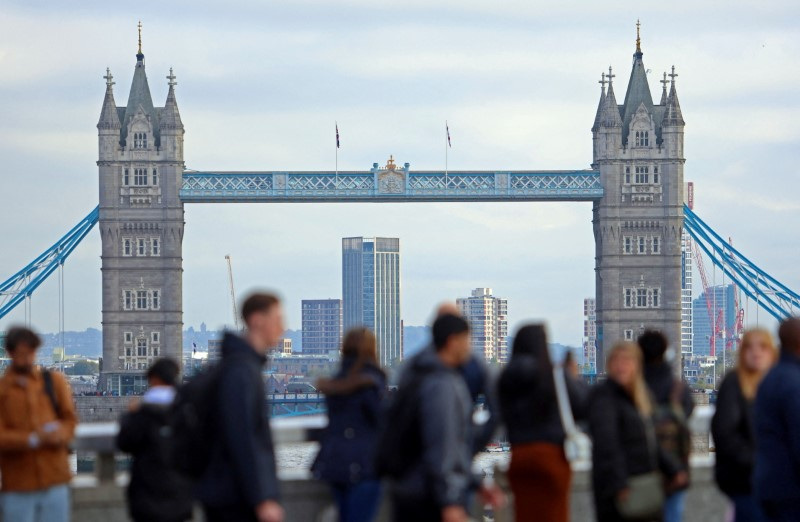In a twist that could ease the Bank of England’s anxiety over inflation, British pay growth has slowed to its lowest pace in almost two years. Official data released on Tuesday revealed that average weekly earnings, excluding bonuses, rose by just 5.4% in the three months leading up to June. This is a noticeable drop from the 5.8% recorded in the previous quarter, marking the slowest increase since August 2022. Meanwhile, the jobless rate took an unexpected dip, falling to 4.2% from 4.4%, confounding experts who had predicted a rise.
This surprise development sent the sterling soaring against the U.S. dollar, as markets reacted to the possibility of a change in the BoE’s approach. Following a year of maintaining interest rates at a 16-year high of 5.25%, the BoE had cut rates on August 1, signaling a cautious approach to economic recovery. Investors now speculate about the likelihood of another rate cut in September, with odds standing at about one in three.
However, pay growth still outpaces the BoE’s inflation target, growing at nearly double the rate needed to keep inflation at 2%. Data expected on Wednesday is anticipated to show inflation once again exceeding this target. Sanjay Raja, the chief UK economist at Deutsche Bank, noted that while the current data suggests a gradual easing of restrictive monetary policies, a sustained recovery in GDP growth could tighten the labor market further, potentially leading to a less aggressive rate-cutting cycle.
Interestingly, the number of employed people surged by 97,000, far exceeding the 3,000 increase economists had forecast. Raja suggested that the recent improvement in labor force survey response rates might have corrected previous overestimations of joblessness by the Office for National Statistics (ONS). However, the Resolution Foundation expressed concerns that the ONS might still be underestimating employment levels.
Is the Pressure on Pay Easing?
Employers are beginning to anticipate that lower headline inflation will ease wage pressures. A survey by the Chartered Institute of Personnel and Development on Monday revealed that employers expect to raise pay by just 3%—the smallest increase in two years.
Despite this, Britain’s new finance minister, Rachel Reeves, recently approved pay raises of at least 5% for millions of public sector workers. The BoE, however, remains focused on private-sector pay, which it expects to slow to 5% by late 2024 and further to 3% by late 2025. In the three months leading to June, regular pay in the private sector grew at its slowest rate since May 2022, at 5.2%, down from 5.6% in the previous quarter.
When adjusted for lower inflation, real pay (excluding bonuses) has increased by 3.2% from a year ago, representing one of the most significant annual gains since mid-2021. Growth in average earnings, including bonuses, plummeted to 4.5%—the lowest since late 2021—reflecting a sharp decrease in backdated payments for public health workers from a year earlier. Regular pay growth in the public sector also slowed, reaching a five-month low of 6.0% from 6.4%.
The BoE also keeps a close watch on other inflationary pressures, such as labor shortages, which spiked during the COVID-19 pandemic. The number of unfilled job vacancies fell to a three-year low of 884,000 in the three months leading up to July, down from a peak of 1.3 million in mid-2022, though still higher than pre-pandemic levels in early 2020.
Jack Kennedy, a senior economist at Indeed, highlighted the challenges employers face in filling these vacancies, partly due to near-record levels of working-age inactivity, which stood at 9.4 million in the three months leading up to June. The percentage of working-age people who are neither employed nor unemployed—due to reasons like poor health, full-time study, or caregiving responsibilities—inched up to 22.2%, nearing an eight-year high.
The UK government has set an ambitious target to raise labor force participation to 80%, a level achieved by countries like the Netherlands, Switzerland, and New Zealand, but not by any larger economy. Rachel Reeves emphasized the importance of increasing workforce participation, signaling that this will be a key focus in her upcoming budget, slated for September 30. She hinted at making “difficult decisions” regarding spending, welfare, and tax to achieve these goals.

